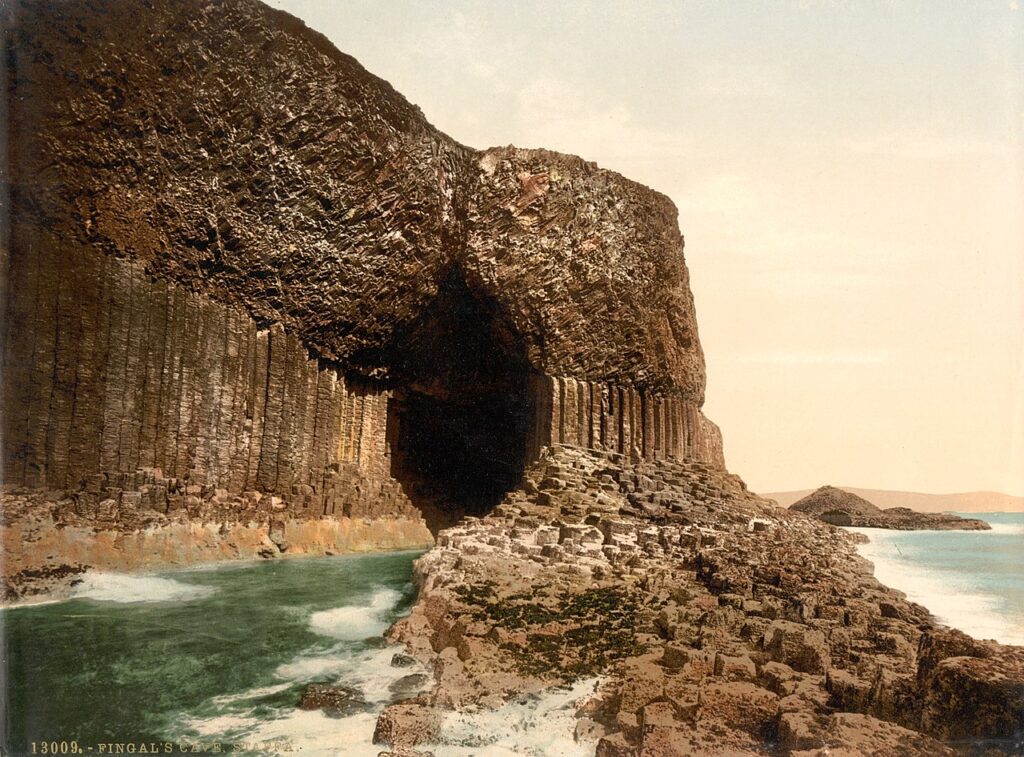Mendelssohn, Hebrides Overture

Felix Mendelssohn (1809-1847) traveled to England in 1829. His journey included a tour of the Scottish Highlands, and there, on the Hebrides islands, he was inspired to sketch out what would become his Hebrides Overture.
Among the Hebrides, Fingal’s Cave lies on the small island of Staffa seven miles off Scotland’s western coast. A popular destination, the poet John Keats wrote, “For solemnity and grandeur it far surpasses the finest cathedral.”
After visiting Fingal’s Cave, Mendelssohn wrote back to his sister Fanny, “In order to make you understand how extraordinarily the Hebrides affect me, the following came into my mind there.” He attached 21 measures.
The work was completed in 1830 and first given the title Die einsame Insel (The Lonely Island). When Mendelssohn revised the score in 1832, he used the title Fingal’s Cave on the score and Die Hebriden on the parts. It is most often titled The Hebrides Overture, but Fingal’s Cave is still used.
The overture was well received and remains one of Mendelssohn’s most popular works. Although there is nothing particularly Scottish about the work, much of it contains figurations typical of a seascape. (Midway through you may hear one lonely and non-thematic “Scottish Snap”—a stereotypical Scottish rhythmic figure comprised of a stressed sixteenth note followed by a dotted eighth.)
While on this trip, Mendelssohn also began work on his Symphony No. 3 known as “The Scottish Symphony,” a name derived from the trip rather than its thematic material.





I enjoyed hearing this piece very much.